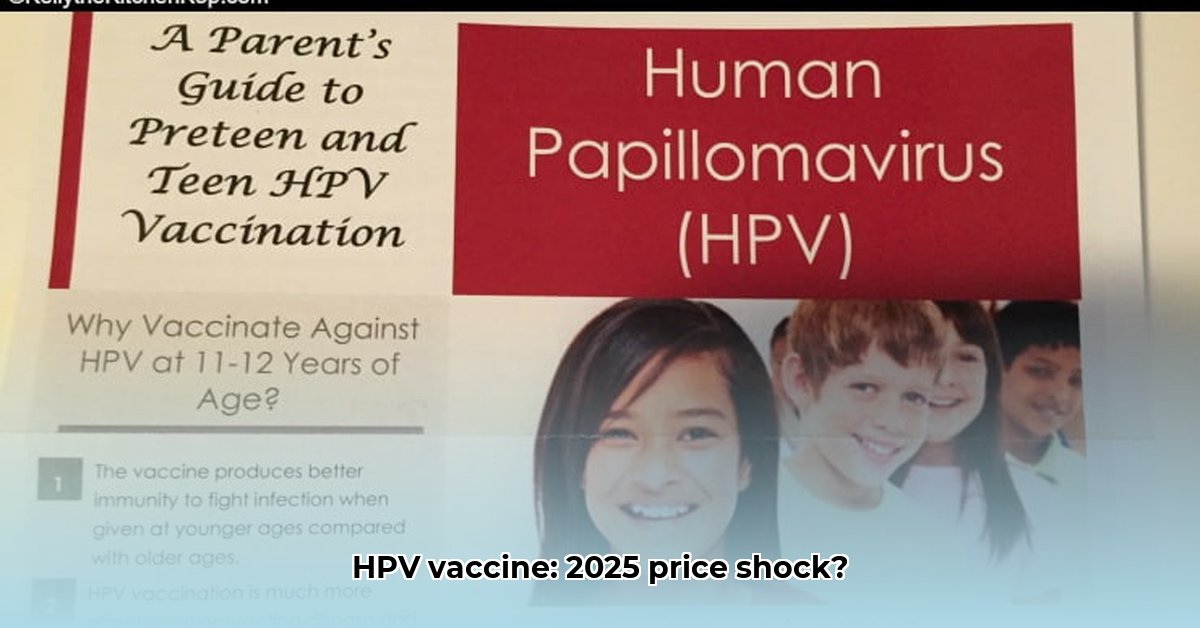
HPV Vaccine Pricing: A Costly Conundrum
The Human Papillomavirus (HPV) vaccine, a crucial preventative measure against cervical cancer and other related diseases, presents a significant pricing puzzle in South Africa. A stark discrepancy exists between the cost secured by the government and the price paid by individuals in the private sector. This article analyses this disparity, explores the contributing factors, and proposes actionable recommendations for all stakeholders involved. Understanding this cost difference is vital for ensuring equitable access to this life-saving vaccine for all South Africans.
The Price Gap: Public vs. Private Sector Costs
A considerable difference exists between the price the government secures for the HPV vaccine, often through bulk purchasing agreements with manufacturers, and the cost incurred by patients in the private healthcare system. This variation isn't simply a matter of a few rands; it's a substantial gap impacting access and affordability. This disparity raises critical questions about equity and access to essential healthcare services, highlighting the need for a thorough examination of the contributing factors involved. What explains this significant price variation, and how can we ensure that all South Africans have access to the vaccine?
Factors Driving the Price Differential
Several factors contribute to the varying costs of the HPV vaccine:
- Manufacturing Costs: The basic costs of production, including raw materials, manufacturing processes, and packaging, form the foundation of the vaccine's price. These costs fluctuate based on global supply chains and economies of scale.
- Research and Development (R&D): The substantial investment in research, clinical trials, and regulatory approvals significantly influences the initial pricing of the vaccine. These costs are often recouped through sales, impacting the final price per dose.
- Market Dynamics: Supply and demand play a crucial role. Bulk purchasing by government institutions often leads to lower per-unit costs. Private sector pricing, on the other hand, often reflects individual patient demand and the healthcare provider's operational costs.
- Regulatory Hurdles: The rigorous regulatory approval processes add to the overall cost. Compliance with local and international standards demands significant administrative resources, impacting the final price.
- Profit Margins: Manufacturers require adequate profit margins to sustain ongoing research, development, and distribution of the vaccine. This is vital not only for the current vaccine but for future improvements and innovation within this critical field.
Impact on Key Stakeholders
The price disparity affects various stakeholders:
- Patients: High costs create financial barriers, particularly for those without comprehensive medical aid, potentially hindering vaccine uptake and protecting against preventable diseases.
- Healthcare Providers: Private clinics face financial pressures in providing the vaccine while maintaining profitability, potentially impacting their commitment to comprehensive vaccination programmes.
- Vaccine Manufacturers: Manufacturers must balance the need for profitability with the public health imperative of ensuring affordable access.
- Government (National Department of Health): The government faces budgetary limitations in securing sufficient doses for nationwide vaccination campaigns and needs to develop strategies for equitable access for all South Africans.
Recommendations for Equitable Access
Addressing the HPV vaccine price disparity requires a multi-pronged approach:
- Enhanced Transparency: Manufacturers and distributors must enhance pricing transparency, clearly outlining the cost components. This fosters greater understanding and enables more effective negotiation.
- Strategic Procurement: The government, through the National Department of Health, should continue and expand its strategic procurement strategies, leveraging bulk purchasing to secure lower prices, optimising the allocation of resources, and maximising the reach of the vaccination programme.
- Subsidies & Financial Assistance: Government subsidies and financial assistance programmes can help cover the cost for low-income individuals and families, creating equal access within all health sectors, both private and public.
- Public Awareness Campaigns: Public awareness campaigns can raise awareness of HPV’s risks and the vaccine’s importance. Greater demand can potentially influence pricing through increased market pressure.
- Innovative Pricing Models: The exploration of innovative pricing models, such as tiered pricing or payment plans, may help improve affordability for individuals and clinics.
- Ongoing Research: Continued research on cost-effective manufacturing and efficient distribution strategies is essential for long-term sustainability and optimisation of efforts.
Conclusion: Towards Universal HPV Vaccination
The HPV vaccine price disparity shouldn't be seen as an insurmountable hurdle. Through greater transparency, strategic partnerships between the Government and healthcare providers, and the implementation of innovative models for delivery and financing, we can strive towards universal vaccination in South Africa. Making this life-saving vaccine accessible to everyone will not only reduce the burden of HPV-related diseases, but it will also represent a significant advancement in the promotion and protection of population health and wellbeing.